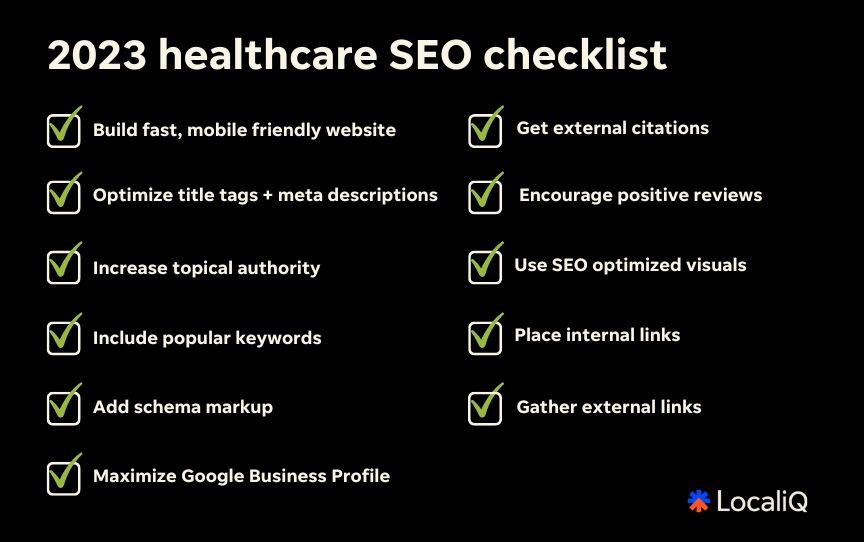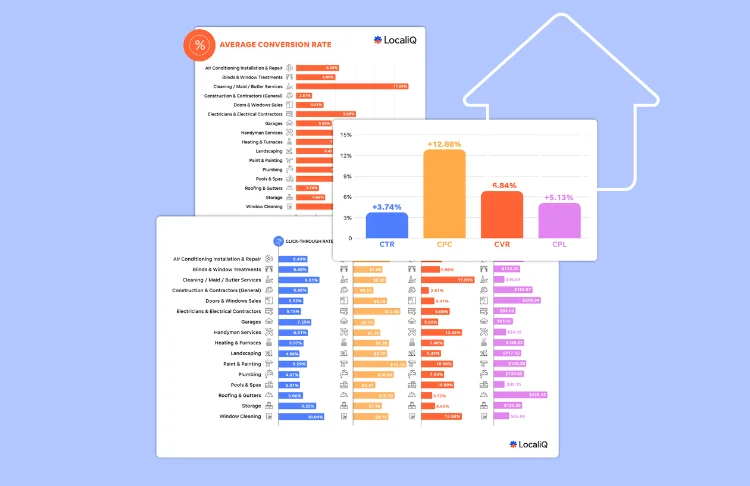Picture this: your healthcare business is easily found online by your target audience, you’re generating more leads than ever, and your revenue is skyrocketing.
With healthcare SEO, you can turn this dream into reality! Search engine optimization (SEO), when done right, can be an effective way to increase a business’s online visibility and presence. And, more importantly, a way to generate leads and revenue.
Healthcare SEO comprises multiple strategies and best practices, which we’ll cover here.
What is healthcare SEO?
Healthcare SEO is the practice of optimizing your medical business’s website to rank in search engine results for queries related to your business. It indicates to search engines, like Google or Bing, that your site is the right result to show when a patient or client is searching for terms relevant to your service lines or areas of expertise. So when someone searches for “pediatric offices in Des Moines,” your practice shows up.
While the usual best practices for SEO apply, SEO for the healthcare industry is different. Why? Because Google heaps an extra helping of scrutiny on topics that can significantly influence readers’ health, happiness, safety, or finances.
Collectively, Google calls these YMYL (Your Money, Your Life) topics. And healthcare is at the top of the list. So to maximize your chances of landing at the top of relevant searches, your website will need to meet E-E-A-T (experience, expertise, authority, and trust) standards.
Why is SEO important in healthcare?
Healthcare SEO, like general SEO, increases online visibility and drives traffic. But, more importantly, it can generate leads and patients for a medical facility—often at a lower cost than running ads. Plus, informative, high-quality SEO content will educate many potential and current patients while building trust.
Find new patients
For people looking to improve their health, Google is a busy place. One in 20 searches is health-related, and 77% of patients use search engines before booking an appointment with a healthcare business.

Healthcare SEO helps you to take advantage of these statistics by pushing your website to the top of these search results.
Build credibility and trust
Think about that last time you needed a service provider you could trust, like a plumber or a mechanic. If you looked for them on Google, you probably noticed reviews from previous clients. It’s possible one business showed up in several local searches. And an easy-to-navigate website with helpful content may have sealed the deal, giving you confidence in the provider’s competence.
The same goes for people searching for healthcare solutions. The activities involved in SEO help you build trust with potential healthcare clients.
For Google, these same activities show that your business has the three factors it considers when deciding which local businesses to show during a search:
- Relevance: Does your business match what’s being searched?
- Prominence: How often is your business referenced online?
- Proximity: How far is your business from the searcher or the location searched?
So in one SEO swoop, you’ll get your business at the top of search result pages and build trust with the people looking at them.
How to do healthcare SEO: an 11-point checklist
With the above benefits in mind, what does it take to execute a healthcare SEO strategy successfully? Let’s dig into 11 aspects of optimization you’ll need to master.
1. Invest in a fast, mobile-first site
Google primarily uses the mobile version of website content for indexing and ranking. So, if the mobile version of your website has been an afterthought, you’ll likely have trouble ranking. It’s worth reviewing and implementing Google’s best practices for mobile-first indexing, which include:
- Creating mobile versions of your pages.
- Ensuring that content is the same across your mobile and desktop sites.
- Checking that metadata and any structured data is consistent across both versions of your site.
Plus, since site speed is a confirmed ranking factor, look into speed optimization as well. A good place to start is with Google PageSpeed Insights.
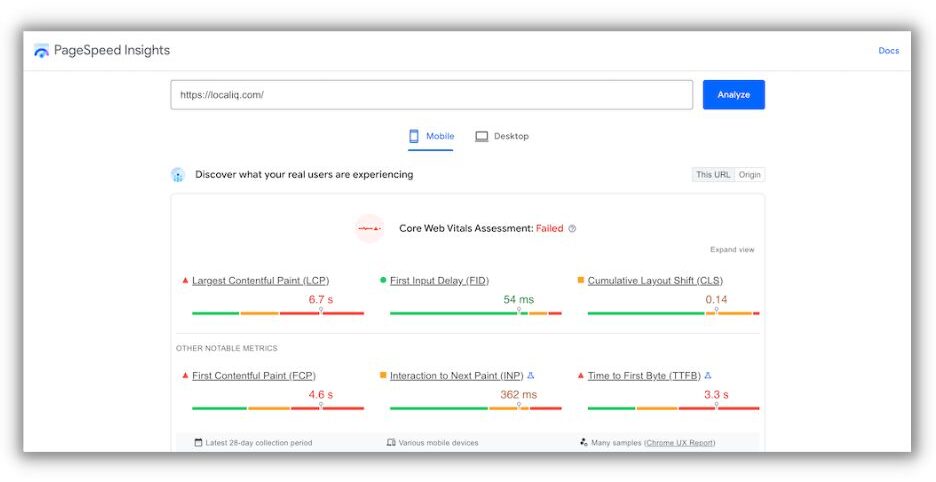
Entering your URL will not only show you how fast your site currently loads but it will give you a list of recommendations for improvements. Many of them are technical in nature and related to things like Javascript and CSS. If you’re not familiar, you may want to hire someone to take care of this and implement mobile-first best practices for you. (Skilled developers can typically fix diagnosed issues and improve performance quickly.)
2. Optimize title tags and meta descriptions
A critical part of SEO is creating a website that both Google and visitors can navigate easily. There are a couple of (not too) technical steps you can take to make it happen.
First, create optimized title tags. Title tags are bits of website code that specify the title of a webpage. They help Google understand what that page is about. Plus, whatever you use as a title tag will be the most prominent text in Google searches.

Most website builders give you a place to add title tags so you don’t have to go mucking about in code.
There are a few guidelines to follow. When writing title tags, they should:
- Be sentence or title case (NOT ALL CAPS).
- Be 50 to 60 characters so they’re visible on search result pages.
- Include the target keyword.
Meta descriptions are also HTML code in your website, but these describe what a page is about. Meta descriptions also find their way onto search results.
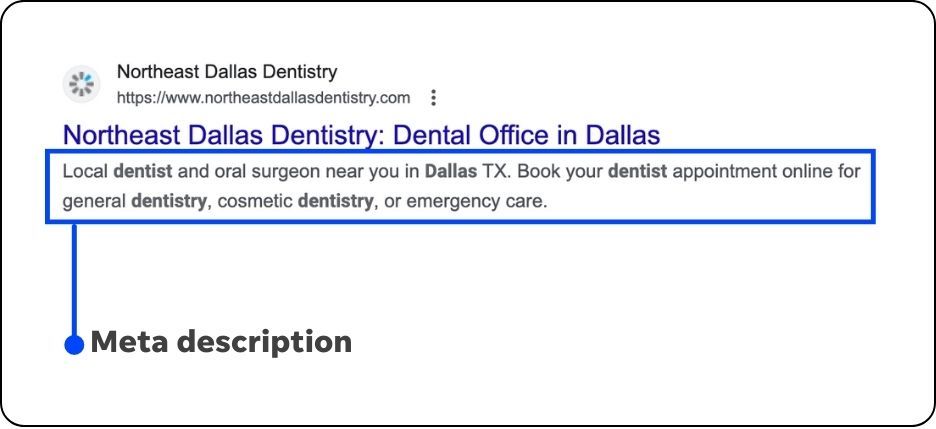
There should also be a place in your content management system (CMS) to put HTML tags. As you do, make sure they:
- Expand on the meta title.
- Be between 120 (mobile) and 160 (desktop) characters long.
- Include the target keyword.
See, not too technical. But really helpful for SEO.
3. Improve topical authority
Especially when it comes to as serious a topic as healthcare, searchers expect reliable information. They expect information from reputable sources with deep topic expertise and track records of trustworthiness. So, search engines like Google favor websites that demonstrate that expertise and authority. There are several ways to make sure your site is one of them.
Showcase credentials and expertise
Put professional bios on your website. Incorporate quotes from the medical professionals at your practice into your SEO content. Attribute that content to a relevant professional.

Plus, if a piece of content was written by someone without specialized medical expertise, don’t just credit the writer. Mention that a medical professional reviewed the information for accuracy and credit them specifically.

Cover your area of expertise completely
What should your goal be as far as healthcare-related SEO content goes? To answer searchers’ questions, address their concerns, and educate them thoroughly.
Of course, this goes for each piece of SEO content you create. For example, a rheumatologist’s practice writing an article on Osteoarthritis would want to cover:
- Symptoms
- Causes
- Preventative measures that can be taken
- How the condition is diagnosed
- How the condition is treated and managed long-term
- Complications that could arise
But, beyond in-depth pieces of content, your website as a whole should go deep. Completely cover topics within your area of expertise and build internal links between all relevant pages. This will show search engines you have the necessary topical authority and will improve your SEO rankings over time.
Think back to our rheumatologist example. Besides Osteoarthritis, there are many other topics the practice would need to cover and interlink. These include other types of arthritis, Lupus, Fibromyalgia, Gout, and more general topics like joint pain.
4. Find and use popular keywords
Keywords and keyphrases are the words people type into search engines. It’s important that your website has the right keywords in the right places so search engines can match your business with relevant queries.
Deciding which SEO keywords to target can be tricky. There are three things you should consider when picking your keyword.
Relevance. The keywords you choose should match what people most likely search for when looking for the services you provide. They should also include your location if your business is local (as opposed to, say, telehealth which may have clients from anywhere).
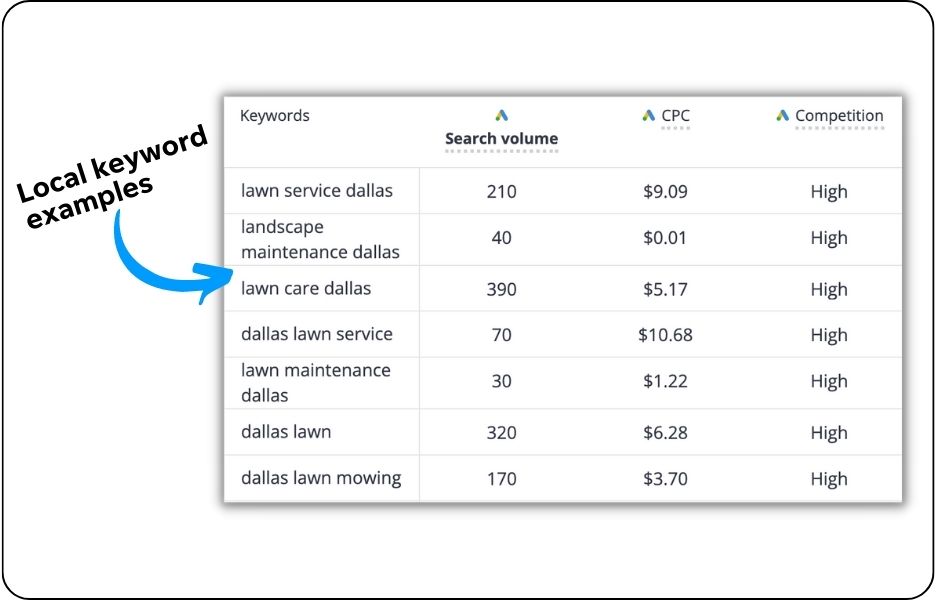
Search volume. No matter how relevant a keyword is to your business, if no one enters it into Google’s search bar it’ll never deliver new patients to your practice. Find keywords that have some monthly search volume using a tool like Ahrefs.
Keyword difficulty. Ahrefs, and other tools, assign keywords a keyword difficulty. The keyword difficulty suggests how hard it will be for a website to push its way to the top of search results pages. Websites like WebMD can battle for high-difficulty keywords. A local skin care office may want to focus on lower-difficulty keywords.
You can see both the volume and difficulty in Ahrefs keyword search.
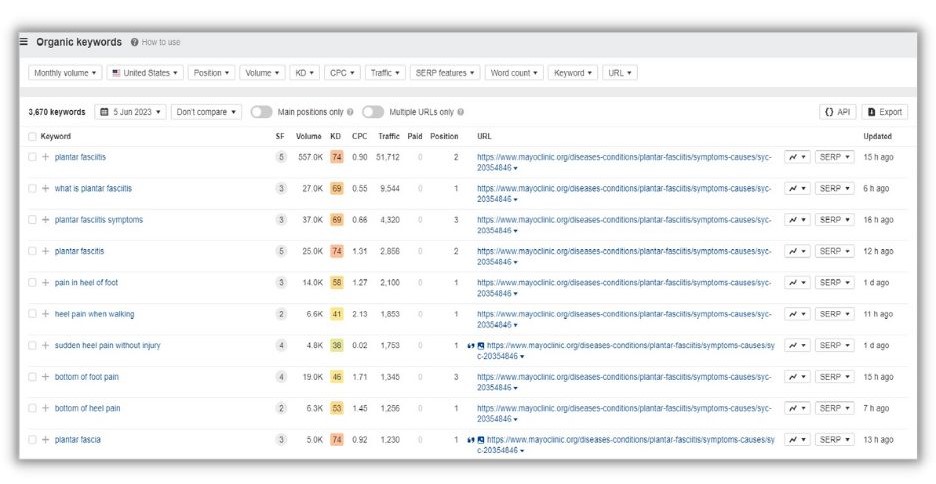
Here’s a complete resource to help you do local keyword research.
Once you find the best keywords, use them liberally across your website. Make sure they’re prominent in blog posts and on your landing, about us, and product pages. And as we mentioned, use them in your title tags and meta descriptions.
5. Add schema markup
Schema markup, also known as structured data, are additions to code that add context to the content on your website. Schema helps Google understand your site better and lets it place more detail in your search results.
For example, you could get Google to show your rating and methods of accepted payment in the search results.
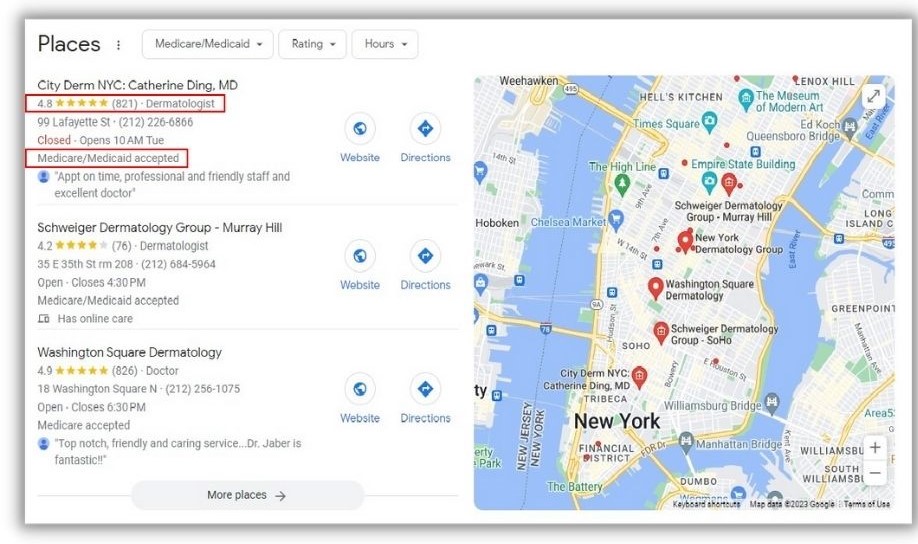
There is a long list of details about your practice you can tag with schema markup. Focus on the information that’ll help patients choose your office.
This step is a little techy. If you don’t have experience with website code, it’ll be best to ask your web designer to take this one on. But don’t skip it. Your competitors likely didn’t.
6. Maximize your Google Business Profile
Often, Google’s search results show what’s called the Local 3-Pack for queries with navigational intent. The 3-pack displays three of the more relevant or best-rated local businesses.

Showing up there—at the top of search results—increases the visibility of your business. It can get exposure to your Google Business listing, drive traffic to your website, and ultimately get more people through your office door.
To have the best chance of your business profile showing up in Google Search and Google Maps results:
- Create or claim your Google Business profile.
- Fill in your location details, business name, phone number, website, and add your business hours.
- Select appropriate categories so that your profile shows up when searchers are looking for a business of your type.
- Write a business description that gives an overview of the services you offer and that gives people a reason to contact you.
- Add photos of the exterior and interior of your business, as well as of your staff.
Tackle these and you’re most of the way to landing a coveted local 3-pack spot. Here are eight Google Business Profile optimization tips to really supercharge traffic from local healthcare searches.
7. Get external citations
Citations are basically online mentions of your business outside of your website. They may be on social media pages or blog posts, but we’re concerned with citations in business directories here.
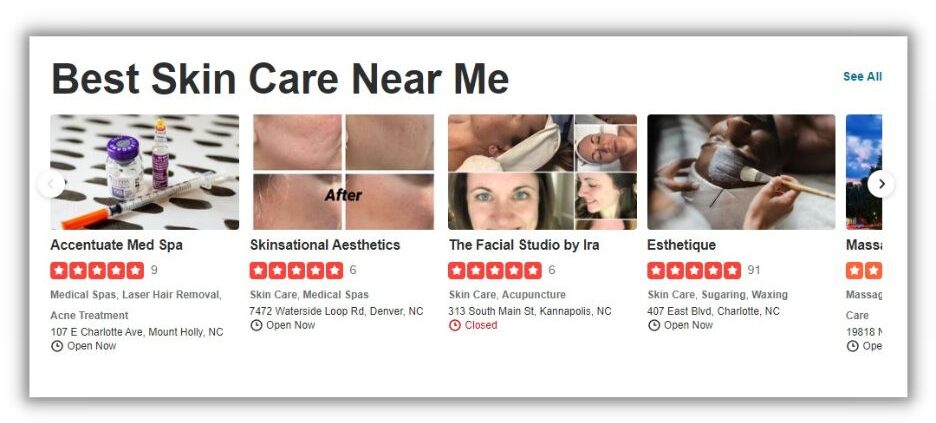
Each citation is a signal to Google that your website is worthy of a high ranking in healthcare-related search results. So you’ll want to get your office included on as many relevant business listing sites, like Yelp, as possible. Don’t forget healthcare directories like Zocdoc. And if your specialty has an association website with a provider list, have your practice added to it.
No matter where your business is listed, verify that your business information—name, address, and phone number— are consistent across sites.
Related: 32% of healthcare businesses lack an accurate local listing online. Don’t let your healthcare business fall victim to this statistic by using the LocaliQ Free Business Listings Grader!
8. Generate more reviews on search and social
Google and social media reviews are the modern-day equivalents of word-of-mouth advertising. There are plenty of stats proving the importance of high ratings and positive reviews for local businesses of all types. And it’s certainly true for healthcare practices that rely on trust to get new patients.
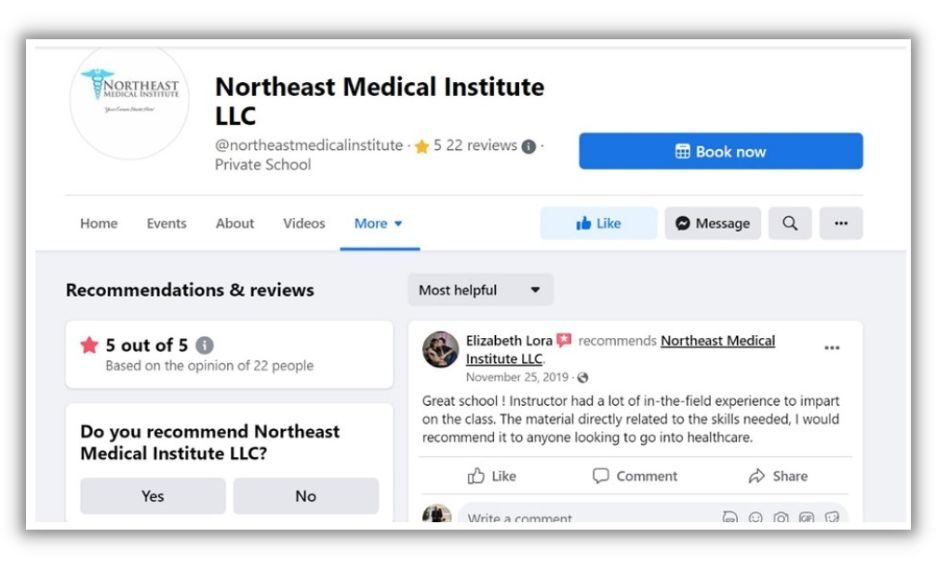
From a healthcare SEO standpoint, you have two jobs:
- Get more happy patients to leave reviews
- Reply to reviews as often and quickly as possible
Why? Because positive reviews and your replies are both ranking factors.
The good news is that this may be the easiest task on the list. Simply use existing patient touchpoints to ask for reviews. Do that whenever you send an email, when someone visits you in person, and when you answer questions on the phone.
9. Use SEO-optimized visuals
Visual content offers several benefits to both user experience and SEO. Images, infographics, and videos make your content more interesting and easier to access. Plus, photos and videos of your staff and office help make them more familiar to patients.
To put visuals to work improving your SEO, you’ll need to add keyword-optimized alt text for each. Alt text are descriptions of visuals on your website. Visitors with visual impairments rely on these descriptions to understand the images they can’t see. It also helps search engines index your visuals so that they show up in relevant image search results.
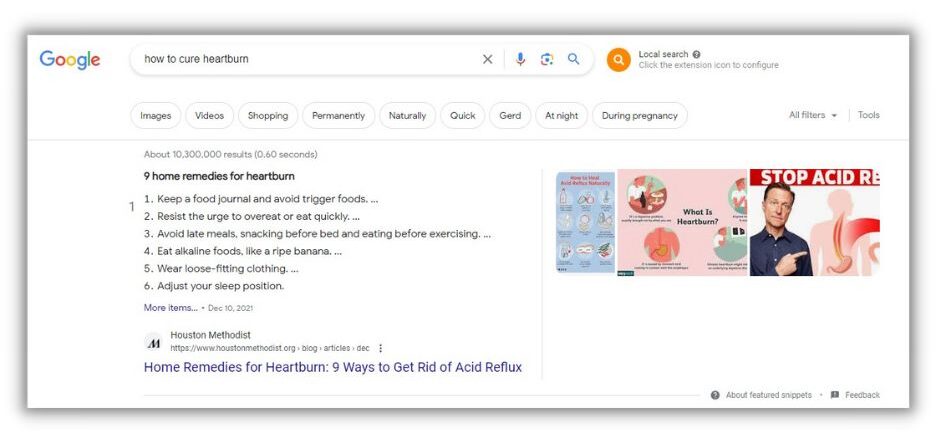
If you create informative videos, share them on YouTube. Search-optimized videos can land at the top of results pages.
When people find and share your visuals, they often link back to your site. This can drive traffic to your website and be a good sign for search engines that helps you to rank higher in search. (Even if not, as long as your visuals are branded with your company name, they can still drive visits to your site.)
10. Add internal links
Internal links are little digital connectors between pages of your hospital or facility website. For both visitors and search engines, internal links act like shortcuts, making it faster and easier to get from one place to the next.
While more internal links are generally better, you should only connect pages with some relevance to each other.
For example, say you have a page on your website that describes your physical therapy services. You should make sure every blog post that answers PT questions links back to that page.
11. Increase your backlinks
Backlinks are links from external websites to your own. Links from respected websites signal to search engines that a page on your site has information people want and is, therefore, worth ranking on page one of relevant search results.
The more high-quality backlinks you can amass without resorting to shady link-building tactics, the better. Your domain authority will increase, along with your ability to rank for the keywords you target. And you’ll be able to drive relevant traffic from the sites that link to yours.
What are some acceptable ways to go about link building?
Guest post for respected healthcare publications
Some healthcare-related websites accept one-off guest posts. Others like WedMD work with long-term contributors. In many cases, these sites allow you to include at least one do-follow link back to your website (either within the content you write or in your author bio).
Forbes, for example, offers different options for paid and unpaid contributions that can connect readers back to your practice.
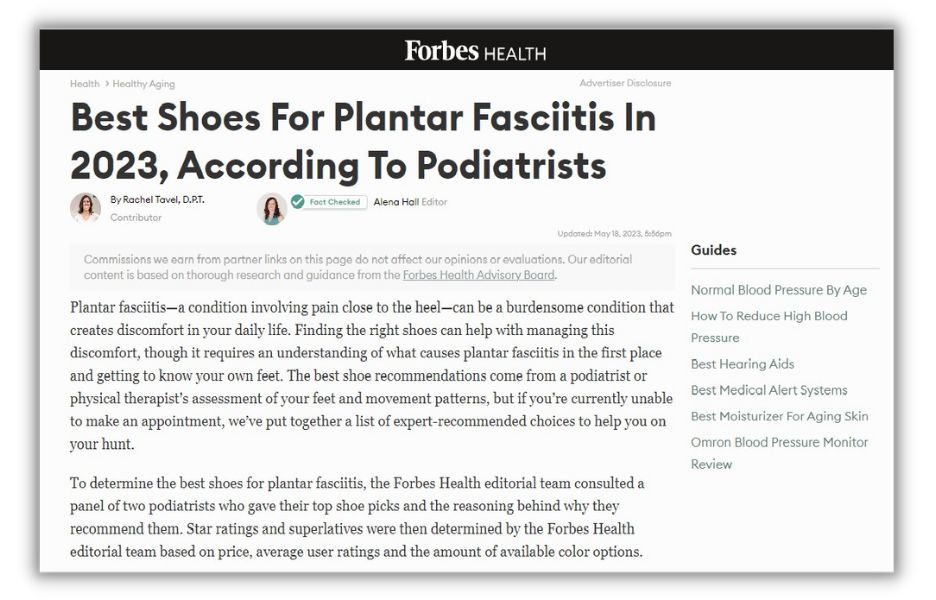
These links help increase your domain authority, drive traffic, and get your name and the name of your practice out there.
Do link-building outreach
Many sites creating content on medical topics will be looking to link to credible websites that confirm the information they share. Doing this builds their credibility and authority. Therefore, your goal should be to become the credible website they want to link to. While some of these sites may find and link to your website organically if your content is good enough, you may want to do some outreach as well.
Identify a list of websites with relevant content that could be linked to content on your site. Then, contact the owners or content managers of those sites. Explain how your content could further educate their audience and see if they’d be willing to link to you.
Get started with healthcare SEO
The hardest part of healthcare SEO? Patience! While many of the healthcare SEO tactics we discussed today may take a bit of time, they’re an important part of a strong marketing strategy and well worth it when you want to achieve your long-term business goals.
Let’s recap our healthcare search engine optimization checklist:
- Build a fast, mobile-first website
- Optimize title tags and meta descriptions
- Improve topical authority
- Find and use popular keywords
- Add schema markup
- Maximize your Google Business Profile
- Get external citations
- Generate more reviews on search and social
- Use SEO-optimized visuals
- Place internal link
- Add internal links
